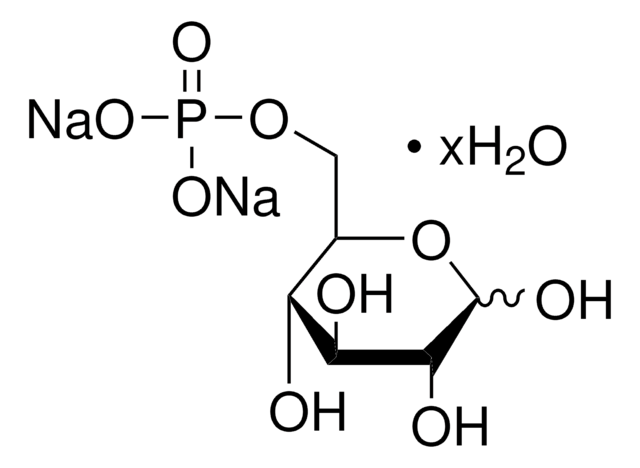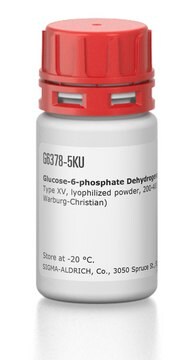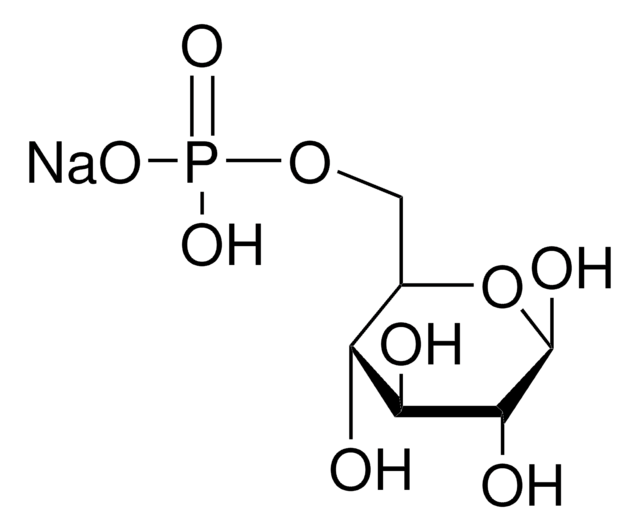A9521
Anti-Glucose-6-Phosphate Dehydrogenase (G-6-PDH) antibody produced in rabbit
IgG fraction of antiserum, lyophilized powder
Sign Into View Organizational & Contract Pricing
All Photos(2)
About This Item
Recommended Products
biological source
rabbit
Quality Level
conjugate
unconjugated
antibody form
IgG fraction of antiserum
antibody product type
primary antibodies
clone
polyclonal
form
lyophilized powder
species reactivity
yeast
technique(s)
immunoelectrophoresis: suitable
indirect ELISA: 1:15,000-1:30,000
shipped in
ambient
storage temp.
2-8°C
target post-translational modification
unmodified
General description
G-6-PDH catalyzes the NADP+(or NAD+)-dependent oxidation of D-glucose-6-phosphate to 6-phospho-D-glucono-1,5-lactone. This reaction is the rate limiting step of the pentose phosphate pathway.
Yeast G-6-PDH is often used as a loading control in several immunoassays.
Yeast G-6-PDH is often used as a loading control in several immunoassays.
Glucose-6-phosphate dehydrogenase (G6PD) is a cytosolic enzyme. It synthesizes NADPH (nicotinamide adenine dinucleotide phosphate). The G6PD gene is located on human chromosome X. It spans 18.5 kb and has 13 exons.
The product is specific for G-6-PDH as determined by immunoelectrophoresis. No reaction is observed with other proteins in a crude Baker′s yeast extract.
Immunogen
G-6-PDH from Baker′s yeast S. cerevisiae.
Application
Anti-Glucose-6-Phosphate Dehydrogenase (G-6-PDH) antibody has been used to detect the immunoreactive mass of glyceraldehyde 3-phosphate dehydrogenase (GAPDH). It has also been used in western blotting.
Rabbit Anti-Glucose-6-Phosphate Dehydrogenase (G-6-PDH) antibody has been used for western blot assays. The antibody can also be used for indirect ELISA (1:15,000-1:30,000) and immunoelectrophoresis.
Yeast cell extracts were analyzed by western blot and equal loading was determined by probing with rabbit anti-Glucose-6-Phosphate Dehydrogenase antibody.
Biochem/physiol Actions
NADPH (nicotinamide adenine dinucleotide phosphate), produced by glucose-6-phosphate dehydrogenase (G6PD) is an electron donor molecule, that helps in neutralizing harmful oxidizing agents. Deficiency in G6PD shows symptoms, that includes neonatal jaundice and acute episodic hemolysis. This enzyme guards the red blood cells against oxidative challenges.
Physical form
Lyophilized from 0.01 M phosphate buffered saline.
Reconstitution
Reconstitute with 2mL deionized water.
Disclaimer
Unless otherwise stated in our catalog or other company documentation accompanying the product(s), our products are intended for research use only and are not to be used for any other purpose, which includes but is not limited to, unauthorized commercial uses, in vitro diagnostic uses, ex vivo or in vivo therapeutic uses or any type of consumption or application to humans or animals.
Not finding the right product?
Try our Product Selector Tool.
Storage Class Code
11 - Combustible Solids
WGK
WGK 3
Flash Point(F)
Not applicable
Flash Point(C)
Not applicable
Personal Protective Equipment
dust mask type N95 (US), Eyeshields, Gloves
Certificates of Analysis (COA)
Search for Certificates of Analysis (COA) by entering the products Lot/Batch Number. Lot and Batch Numbers can be found on a product’s label following the words ‘Lot’ or ‘Batch’.
Already Own This Product?
Find documentation for the products that you have recently purchased in the Document Library.
Customers Also Viewed
Molecular Hematopathology
Hematologic Pathology, 712-760 (2019)
A conserved C-terminal element in the yeast Doa10 and human MARCH6 ubiquitin ligases required for selective substrate degradation
Zattas D, et al.
The Journal of Biological Chemistry, 29(7), jbc-M116 (2016)
Cytochemical flow analysis of intracellular G6 PD and aggregate analysis of mosaic G6 PD expression
Kalnoky M, et al.
European Journal of Haematology, 100(3), 294-303 (2018)
Danazol inhibits aromatase activity of endometriosis-derived stromal cells by a competitive mechanism
Murakami K, et al.
Fertility and Sterility, 86(2), 291-297 (2006)
Nadya Morozova et al.
Nature cell biology, 8(11), 1263-1269 (2006-10-17)
Ypt-Rab GTPases are key regulators of the various steps of intracellular trafficking. Guanine nucleotide-exchange factors (GEFs) regulate the conversion of Ypt-Rabs to the GTP-bound state, in which they interact with effectors that mediate all the known aspects of vesicular transport.
Our team of scientists has experience in all areas of research including Life Science, Material Science, Chemical Synthesis, Chromatography, Analytical and many others.
Contact Technical Service







